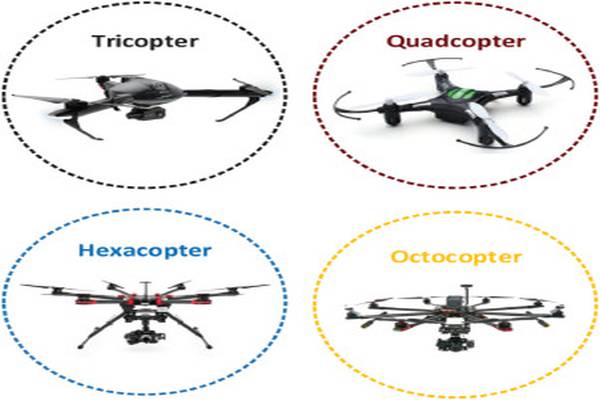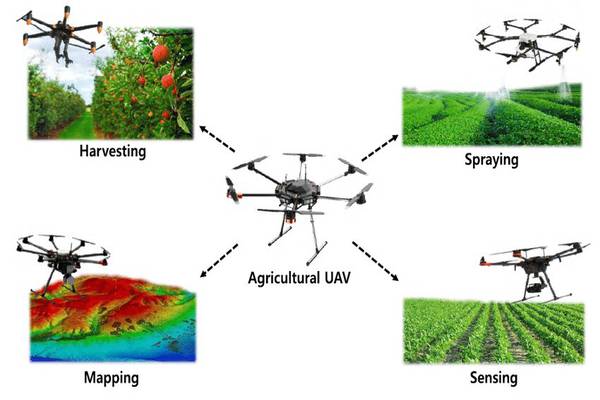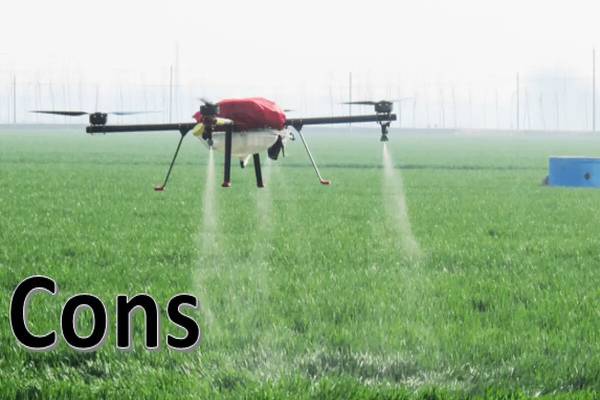A Guide To Uav Agricultural Machinery
Drafted by: vijaychourey26@gmail.com
In recent years, the agricultural industry has witnessed significant advancements in technology, with unmanned aerial vehicles (UAVs) playing a crucial role. UAVs, commonly known as drones, have revolutionized various sectors, including agriculture. These autonomous flying machines equipped with advanced sensors and cameras offer immense potential in optimizing agricultural processes and improving overall productivity.
Types Of Uav Agricultural Machinery
Fixed-Wing Drones
Definition and Design
Fixed-wing drones are UAVs that resemble traditional airplanes in design. They feature fixed wings and require a runway for takeoff and landing. These drones are equipped with powerful engines and can cover large areas efficiently.
Applications in Agriculture
Fixed-wing drones are well-suited for large-scale farming operations. They are capable of flying at high altitudes and covering extensive acreage in a single flight. These drones are often used for crop monitoring, mapping, and surveillance. Their ability to capture high-resolution aerial imagery allows farmers to assess crop health, identify nutrient deficiencies, detect pest infestations, and make informed decisions for optimized crop management.
Multi-Rotor Drones
Definition and Design
Multi-rotor drones, also known as quadcopters, are the most common type of UAVs used in agriculture. They feature multiple rotors (typically four, but can vary) that provide vertical takeoff and landing capabilities, as well as maneuverability in different directions.
Applications in Agriculture
Multi-rotor drones are versatile and can be employed in various agricultural applications. They excel in precision agriculture tasks such as crop scouting, plant health assessment, and irrigation management. Equipped with specialized sensors, they can capture detailed imagery of crops, analyze vegetation indices, and generate accurate 3D models of fields. These drones also aid in the application of fertilizers, pesticides, and herbicides with precise targeting, reducing waste and environmental impact.
Hybrid Drones
Definition and Design
Hybrid drones combine the features of both fixed-wing and multi-rotor drones. They possess vertical takeoff and landing capabilities like multi-rotor drones but can transition into forward flight for increased efficiency and coverage.
Applications in Agriculture
Hybrid drones offer the best of both worlds, combining the advantages of fixed-wing and multi-rotor drones. They are ideal for large farms that require both extensive coverage and detailed data collection. Hybrid drones are commonly used for crop mapping, surveying, and monitoring. Their extended flight times and ability to cover vast areas make them valuable tools in precision agriculture.
The Role Of Uavs In Agriculture
Crop Monitoring and Assessment
One of the key applications of UAV agricultural machinery is crop monitoring and assessment. Drones can capture high-resolution images and collect data on crop health, growth patterns, and nutrient deficiencies. This data helps farmers identify potential issues and take proactive measures to address them promptly.
Precision Agriculture
UAVs enable precision agriculture by providing detailed information about soil conditions, moisture levels, and plant health. This data allows farmers to apply fertilizers, pesticides, and water precisely where and when they are needed, optimizing resource usage and reducing waste.
Pest and Disease Management
Early detection of pests and diseases is crucial for effective crop management. UAVs equipped with infrared cameras and advanced imaging sensors can identify signs of infestation or disease before they become visible to the naked eye. This enables farmers to target specific areas for treatment, minimizing the use of chemicals and reducing the overall environmental impact.
Irrigation Management
Water is a precious resource in agriculture, and efficient irrigation is essential for crop growth. UAVs equipped with thermal sensors can assess plant water stress levels and identify areas that require additional irrigation. By optimizing water usage, farmers can conserve resources and promote sustainable farming practices.
Crop Dusting
Traditionally, crop dusting has been done using manned aircraft, which can be costly and pose safety risks. UAVs equipped with sprayers can efficiently apply fertilizers, pesticides, and other chemicals to crops, ensuring even coverage and reducing human exposure to harmful substances.
Advantages Of Uav Agricultural Machinery
Increased Efficiency
UAV agricultural machinery enables farmers to monitor and manage large areas of land quickly and accurately. The use of drones eliminates the need for manual labor, reducing time and costs associated with traditional farming practices.
Cost Savings
By using UAVs for crop monitoring, farmers can detect problems early on and take targeted actions. This helps prevent yield losses and reduces the need for excessive chemical treatments, resulting in cost savings and improved profitability.
Enhanced Crop Quality
The ability to monitor crops closely and intervene at the right time leads to improved crop quality. UAVs provide valuable data on plant health and growth, allowing farmers to optimize cultivation practices and maximize yields.
Environmental Benefits
UAV agricultural machinery promotes sustainable farming practices. By precisely applying fertilizers and pesticides, farmers can minimize chemical runoff and reduce their impact on the environment. Additionally, drones reduce the need for heavy machinery, leading to decreased soil compaction and erosion.
Challenges And Limitations
Regulatory Restrictions
The use of UAVs in agriculture is subject to regulations and restrictions imposed by aviation authorities. Obtaining the necessary permits and licenses can be time-consuming and costly for farmers, hindering the widespread adoption of this technology.
Privacy Concerns
As drones capture aerial images, privacy concerns arise among neighboring residents and communities. Strict guidelines and policies need to be in place to protect the privacy rights of individuals while ensuring the responsible use of UAVs in agriculture.
Technical Limitations
Despite the advancements in UAV technology, certain limitations remain. Factors such as flight time, payload capacity, and weather conditions can impact the effectiveness and efficiency of UAV agricultural machinery. Ongoing research and development efforts aim to address these challenges and enhance the capabilities of agricultural drones.
Future Developments And Innovations
The field of UAV agricultural machinery continues to evolve rapidly. Researchers and innovators are working on improving flight endurance, developing more advanced sensors, and integrating artificial intelligence for data analysis and decision-making. These advancements hold the promise of further enhancing the efficiency and effectiveness of agricultural practices.





